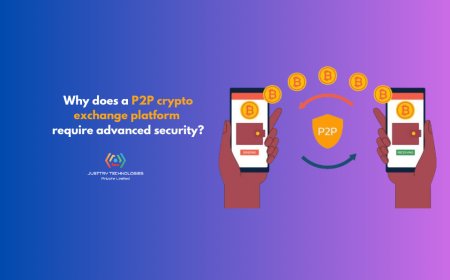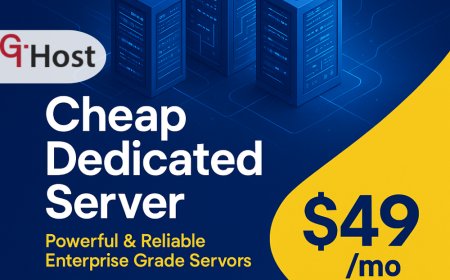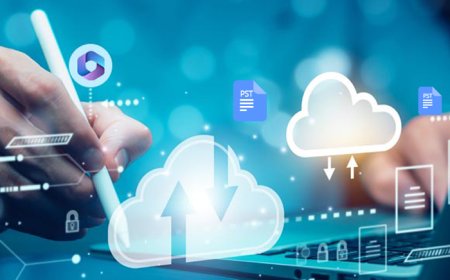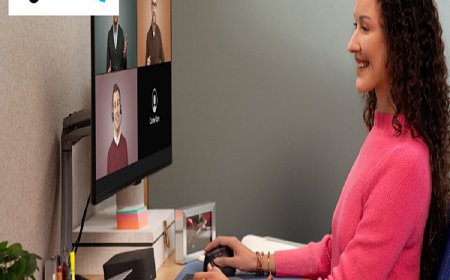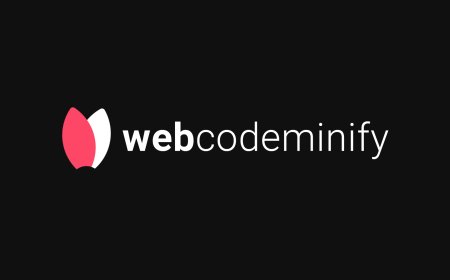Chicago Public School lunch program apps developed by a mobile app development company in Chicago
Explore how a mobile app development company in Chicago is transforming public school lunches through smart apps. A fresh take on education and technology.

Before we dive into the tech, lets talk about lunch. For many students in the Chicago Public School (CPS) system, lunch isnt just a breakits a lifeline. Its the only complete meal some kids get all day. So when you combine nutrition with smart technology, something powerful happens. Enter the role of a mobile app development company in Chicago, bridging the gap between public service and innovation.
The Traditional Lunch Programs Challenges
Lets be honest. School lunch systems, especially in large districts like CPS, often struggle with outdated processes:
-
Paper-based meal logs
-
No clear allergy alerts
-
Lack of real-time tracking for parents
-
Students unaware of whats being served
All these issues contribute to inefficiency, food waste, and missed mealsespecially for kids with dietary restrictions.
Where Tech Steps In: Mobile Lunch Apps
Beyond Just Menus
Modern apps developed by software development companies now allow students and parents to:
-
See daily and weekly lunch menus
-
Get nutritional breakdowns
-
Mark allergens and set restrictions
-
Pre-order meals
All of this is managed from one clean interface.
Real-Time Updates
If theres a sudden menu change or a supply shortage, apps notify parents and students instantly. This feature is especially helpful for kids with severe allergies or religious dietary restrictions.
Developed by Local Talent: Chicagos Own Innovators
What makes this solution even more impressive? Its homegrown. A mobile app development company in Chicago built and tailored the app specifically for CPS needs. By working directly with local schools, the company ensured every feature solved a real problem, not just a hypothetical one.
Local Collaboration
Teachers, nutritionists, CPS staff, and even students contributed to beta testing. Feedback loops helped developers refine:
-
User interface simplicity
-
Multilingual support
-
Offline access for areas with low connectivity
Parent-Friendly Dashboard
Parents now have their own portal. Through it, they can:
-
Monitor their childs lunch consumption
-
Set dietary preferences
-
Top-up digital lunch accounts
-
Receive alerts about skipped meals
This level of transparency not only eases parental concerns but also promotes accountability and encourages better eating habits.
Tech That Talks to the Kitchen
Heres something cool: The app doesnt just serve usersit talks to kitchen staff too.
Smart Inventory
Cafeteria staff can track meal orders in advance, reducing food waste and better managing supplies.
Forecasting Tools
The system can predict high-demand days (e.g., pizza Fridays!) and suggest preparation changes accordingly.
Instant Feedback
Students can rate meals. That data goes straight to the kitchen and the districts nutrition planners, ensuring popular dishes stay and unpopular ones evolve.
Accessibility First
Every feature was built with inclusion in mind:
-
Support for English, Spanish, and Polishthe top languages spoken in CPS
-
Compatibility with voice-assisted devices for visually impaired users
-
Designed for both Android and iOS
-
Light data usage for students with limited mobile plans
This kind of accessibility shows how a mobile app development company in Chicago understands the citys diversity and needs.
Impact So Far
Though still rolling out district-wide, early data shows:
-
25% reduction in food waste in pilot schools
-
40% increase in lunch program participation
-
90% positive feedback from parents
-
Decrease in allergy incidents thanks to alert-based meal customization
What CPS Officials Are Saying
CPS leaders have praised the initiative for merging software development companies capabilities with public service goals. One official said, This is the first time weve truly used digital tools to empower kids in their own health decisions.
Student Voices
The app isnt just about logisticsits become a tool for advocacy. Students can suggest:
-
New menu items
-
Eco-friendly packaging alternatives
-
Meatless Mondays or culturally relevant dishes
And with a few taps, their voices reach decision-makers.
Linking Lunch to Learning
Lets not forget: nutrition impacts learning.
With students eating better meals more consistently, some schools have reported:
-
Increased classroom focus post-lunch
-
Reduced afternoon disciplinary issues
-
Higher participation in wellness programs
This is tech supporting education in the most fundamental way.
The Business Angle: More Than Just School Lunch
This success story positions the mobile app development company in Chicago as a leader in civic techtechnology designed to improve public services. Its a growing niche for software development companies looking to make meaningful impact.
What Other Cities Can Learn
If this model succeeds in Chicago, it could serve as a template for other public school systems across the U.S. Customization is key, but the underlying logic remains:
-
Combine tech + public service
-
Listen to users (students, parents, staff)
-
Iterate fast and build with empathy
Future Features on the Roadmap
Food Education
Plans are underway to add in-app quizzes and facts on:
-
Healthy eating
-
Cultural cuisines
-
How food impacts mood
Loyalty & Rewards
A gamified reward system will encourage kids to make healthy choices. Imagine earning points for trying a new veggie dish and exchanging them for school swag.
Integration with Physical Health Apps
The long-term vision? Integrate lunch data with fitness apps so families get a holistic view of the childs well-beingfrom steps walked to calories consumed.
Final Thoughts: Tech That Feeds
This isnt just an app. Its a statementthat every part of a childs school experience, including lunch, deserves thought, innovation, and care.
By partnering with a mobile app development company in Chicago, the CPS system proves that good tech doesnt have to be flashy. Sometimes, it just needs to be smart, inclusive, and serve a bigger purpose.
Why It Matters to the Industry
For other software development companies, this project serves as a powerful case study:
-
B2G (business to government) work is impactful and scalable
-
Local partnerships drive better product-market fit
-
Apps with purpose often outperform commercial apps in user retention and satisfaction
Conclusion: Feeding Minds, Not Just Mouths
In todays world, food, tech, and learning dont have to be separate. They can exist in the same digital ecosystem, working together to support kids where they need it most.
This is what happens when a mobile app development company in Chicago builds something not just for usersbut with them.






